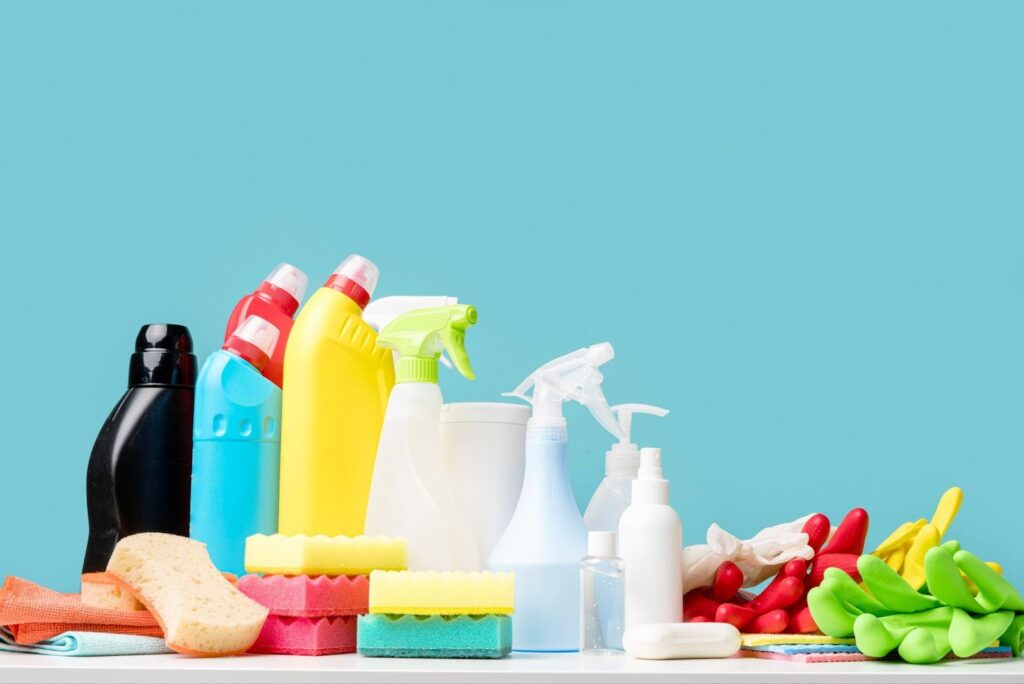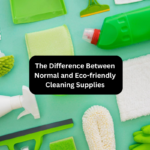
Eco-consciousness has transcended its status as a passing trend for many individuals. In light of the cascading repercussions that humanity has experienced, we now have a greater understanding of the necessity to tend to our environmental future.
Furthermore, taking part in improving our environment is not an arduous undertaking. It is as straightforward as demonstrating greater attentiveness towards the cleaning agents that are utilized to sanitize our abodes.
What is green cleaning?
Although the term “green cleaning” is open to many interpretations, its main goal is to use cleaning methods and products that promote the well-being of both humans and the environment. Long-term exposure to chemicals and poisons may result in irreparable damage to our bodies’ water systems, air quality, and ecology as a whole. Using eco-friendly cleaning products or engaging in a cleaning procedure that reduces the amount of waste that ends up in landfills are two examples of adopting green cleaning techniques.
For some people, green cleaning entails merely disinfecting domestic surfaces with natural products like baking soda, vinegar, and lemons. These products are recognized as organic, natural cleaners. On the other hand, some homes could choose to employ manufactured green cleaning solutions that are safe for the environment (often referred to as green brands).
The following qualities are often present in green cleaning products:
- No phosphates
- No chlorine
- No artificial fragrances
- No artificial colors
- Biodegradable or recyclable packaging
- Organically grown ingredients employing sustainable farming practices
Some environmentally friendly cleaning products may be fair trade certified, proving that they adhere to strict labor and environmental guidelines established by their manufacturers. On the other hand, even if certain green cleaning products may have dangerous additives or chemicals in them, a percentage of their sales may go to environmental charities.

6 Tips for Choosing Green Cleaning Chemicals
In response to the growing demand for eco-friendly solutions from both businesses and consumers, cleaning chemical manufacturers have responded with a plethora of healthy and environmentally-friendly options. However, with so many products available, it can be difficult to determine which ones are truly “green.” To help you make an informed decision when choosing green cleaners, here are some tips to consider:
Read: Popping Off with Nostalgia Jewelry Trends and More in 2023
Make your own green chemicals
Three essential ingredients—baking soda, white vinegar, and liquid soap—can be relied upon to create natural cleaning solutions that are both efficient and reliable. To handle practically any cleaning task, these can be combined in various ways. For you to try out, we’ve gathered some of our favorite cleaning recipes.
A basic all-purpose cleaner made with white vinegar and water in a 50/50 ratio that can be put in a spray bottle is an excellent place to start. You’ll be astonished at how adaptable and practical this straightforward solution can be for many cleaning tasks!
Use fewer products
A fantastic method to streamline your cleaning supplies and lower the number of items you need for each space or function is to make your own all-purpose cleaner. You can build a cleaning solution that works well for the majority of cleaning jobs rather than buying separate cleansers for various surfaces. You will not only save money by doing this, but fewer plastic bottles and other packaging will end up in landfills. Additionally, you can add essential oils or other natural substances to the cleaner to give it a pleasing aroma and boost its cleaning ability.
Avoid Ammonia or Chlorine Bleach
Ammonia and bleach are two of the most hazardous cleaning supplies we employ. These two compounds can mix to form a very poisonous gas that can injure our respiratory systems and other body systems. Therefore, wherever feasible, it is advisable to refrain from using ammonia or chlorine bleach for cleaning purposes.
Using a solution of baking soda and vinegar to clean your bathroom or other surfaces is a fantastic alternative. These two organic chemicals are fantastic in getting rid of stains and cleaning surfaces. Additionally, you can clean your home’s stainless steel surfaces with this mixture. When cleaning your house, it’s always preferable to utilize natural and secure materials.
Avoid antimicrobial products
Regular disinfection is not frequently required if everyone in your family is typically healthy. Regular washing with simple soap and water and thorough rinsing can eliminate dirt and bacteria effectively. It’s critical to distinguish between cleaning and disinfecting. Disinfect only when absolutely necessary after cleaning. Triclosan, triclocarban, and ammonium quaternary compounds (often known as “quats”) are examples of common antibacterial agents to stay away from.
The best disinfectant is chlorine bleach, but it should only be applied occasionally. Antimicrobial product usage instructions might vary widely, so it’s important to carefully follow the instructions on pre-cleaning, dwell time, and rinsing to make sure the product functions as intended.
Product is Non-toxic
To prevent exposure to dangerous chemicals and elements, it’s crucial to use non-toxic cleaners on surfaces that you use frequently. It can also be damaging to your health to breathe in these toxins when they evaporate into the air. The good news is that there are plenty of alternatives to conventional cleaners, including producing your own all-purpose cleaner in a spray bottle or buying greener versions from shops. Since they won’t emit dangerous chemicals into the air and can be used on frequently handled surfaces without concern, these non-toxic cleansers offer a safer alternative.
Grab Biodegradable
You have the option of using biodegradable cleaning equipment in addition to generating your own all-purpose cleaner. Cleaning tools made of wood and other natural materials are widely available on the market today. In addition to updating your equipment, look for cleaning products with biodegradable packaging.
It’s critical to select biodegradable cleaning supplies and tools. You can be certain that they will decompose and eventually return to the earth in this way. Cleaning your home doesn’t have to add to the constant human production of non-biodegradable garbage.
Read: What is an Average Export Obligation under EPCG?
Final Words
Small adjustments to the way you use and dispose of cleaning supplies can have a big impact on the environment. You can lessen the amount of hazardous chemicals in your house and your contribution to non-biodegradable waste by following the advice given above and opting for environmentally friendly substitutes. When buying cleaning materials, take these adjustments into account if you value environmental responsibility.
Author’s Bio:
Sally brings 26 years of experience to Warsaw Chemical. She began in Sales, managing customer training seminars. Later, she moved to Content Writing, crafting tech sheets for Warsaw Chemical and its customers.





